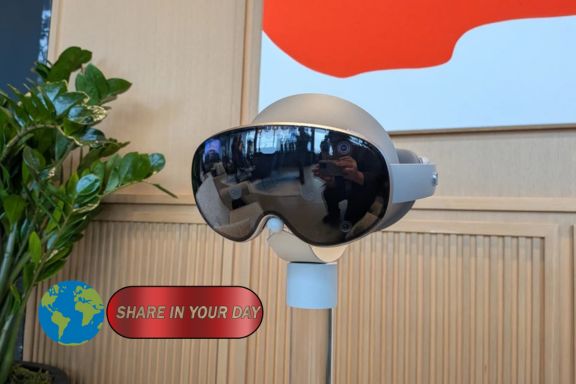Samsung Galaxy XR vs Meta Quest 3: Specs, Price, and Key Differences Explained
October 24, 2025
For years, Meta has dominated the consumer virtual reality market, setting the standard for headsets that merge digital and physical worlds. But now, Samsung is making its biggest play yet in that same space with the launch of the Galaxy XR headset — and it’s aiming directly at the Meta Quest 3.

While both devices promise immersive mixed-reality experiences, their approach, design, and pricing couldn’t be more different. Here’s how the Galaxy XR and Meta Quest 3 stack up when compared head-to-head.
💰 Price: A Huge Divide
The most immediate and striking difference between the two headsets is cost.
- Samsung Galaxy XR: $1,799
- Meta Quest 3: $499 (base model)
That’s a staggering $1,300 price gap — enough to make some question whether these two devices truly compete in the same category. While both technically offer “XR” (extended reality) experiences, Meta’s Quest 3 is clearly aimed at mainstream consumers, while Samsung’s Galaxy XR targets enthusiasts and professionals looking for premium build quality and performance.
⚙️ Specs: Premium Hardware vs Practical Value
| Feature | Samsung Galaxy XR | Meta Quest 3 |
|---|---|---|
| Display Type | Dual micro-OLED | Dual LCD |
| Resolution (per eye) | 3552×3840 | 2064×2208 |
| Refresh Rate | Up to 90Hz | Up to 120Hz |
| Chipset | Snapdragon XR2+ Gen 2 | Snapdragon XR2 Gen 2 |
| RAM | 16GB | 8GB |
| Storage | 256GB | Up to 512GB |
| Field of View | 109° (H), 100° (V) | 103.8° (H), 96.4° (V) |
| Weight | 545g | 515g |
| Eye Tracking | ✅ Yes | ❌ No |
| Controllers | Sold separately ($249) | Included |
| Operating System | Android XR | Meta OS |
Samsung’s use of micro-OLED displays results in sharper visuals, richer contrast, and deeper blacks compared to the LCD panels in the Quest 3. However, Meta’s headset edges ahead with a slightly higher refresh rate (120Hz vs. 90Hz), making motion appear smoother during fast-paced gameplay.
The Snapdragon XR2+ Gen 2 chip inside Samsung’s headset is a newer, more powerful version of the chip found in Meta’s Quest 3, paired with double the RAM. That means it should, in theory, deliver faster multitasking and more advanced rendering — though real-world performance tests will tell the full story.
👁️ Eye Tracking and Cameras: Smarter Sensing on Samsung’s Side
The Galaxy XR includes eye tracking and iris recognition, features absent from the Meta Quest 3. Eye tracking not only improves realism in virtual environments but also enables foveated rendering, a technology that boosts performance by focusing detail only where the user is looking.
Samsung’s headset also includes six motion-tracking cameras, compared to the Quest 3’s four. This should translate into better positional tracking and smoother interactions, though Meta’s ecosystem already has mature support for most motion experiences.
Both devices support hand tracking, allowing users to navigate without controllers — but for gaming, controllers still offer superior precision.
🎮 Controllers and Compatibility
Here’s where Meta scores an easy win. The Quest 3 ships with two controllers right in the box, complete with motion tracking and standard buttons. Samsung’s Galaxy XR, on the other hand, does not include controllers. Instead, you’ll need to buy them separately for $249, pushing the total cost well over $2,000.
Another factor is software compatibility. The Galaxy XR runs on Android XR, while the Quest 3 operates on Meta’s proprietary platform, which already has a robust VR game library. That means certain apps or experiences may not overlap between the two ecosystems — a key consideration for users invested in Meta’s content offerings.
🔋 Battery Life: Surprisingly Similar
Despite the price difference, battery performance is nearly identical.
- Samsung Galaxy XR: Up to 2 hours of general use (2.5 hours video playback)
- Meta Quest 3: Around 2.2 hours of mixed use
Both headsets can be used while charging, but given their portability focus, most users will find the battery life adequate for shorter sessions.
🧠 Verdict: Two Different Worlds of XR
In pure specs, Samsung’s Galaxy XR clearly outpaces the Quest 3 — boasting sharper displays, more memory, and advanced eye tracking. But its $1,799 price tag (plus optional $249 controllers) makes it a device for early adopters, developers, or enterprise users, not casual consumers.
Meanwhile, Meta’s Quest 3 remains the best value in the market, offering a balanced mix of performance, usability, and affordability — all at less than a third of the Galaxy XR’s cost.
As Samsung steps into the ring, it may not dethrone Meta in the mainstream XR space just yet, but it’s signaling that the next generation of high-end mixed reality is here — and the competition is finally heating up.



